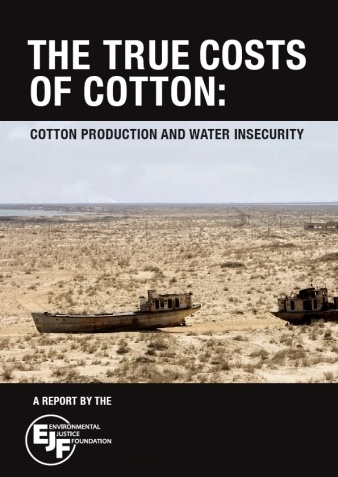Cotton production can be a pathway to development and is an important livelihood option for millions of people. However, production can have unintended social and environmental impacts, in particular this report outlines the role that it plays in contributing to water insecurity.
Cotton is one of the thirstiest crops in the world. Each year 198 cubic gigametres (Gm3) of water are used just to grow cotton and even more is used in processing it. ‘Cheap’ cotton is fuelling unsustainable production, and consumers commonly do not pay a price which reflects these costs. More than 80 percent of the water footprint of cotton consumption in EU member states is located outside Europe, in countries such as China, Pakistan, and Uzbekistan.
The draining of the Aral Sea in Central Asia stands as one of the most damning examples of unsustainable cotton production. The Aral Sea was once the fourth largest inland sea in the world, stretching across an area of 66,000km2. In less than a generation, it has shrunk to 10 percent of its former volume.
